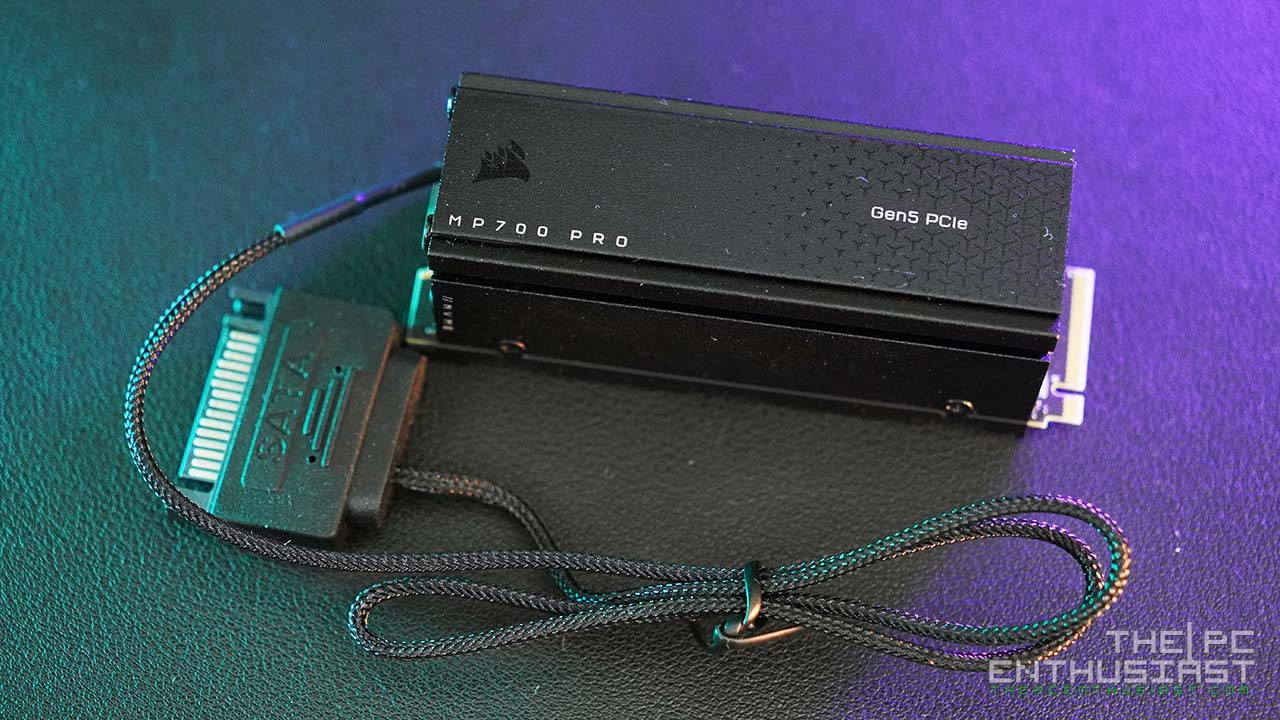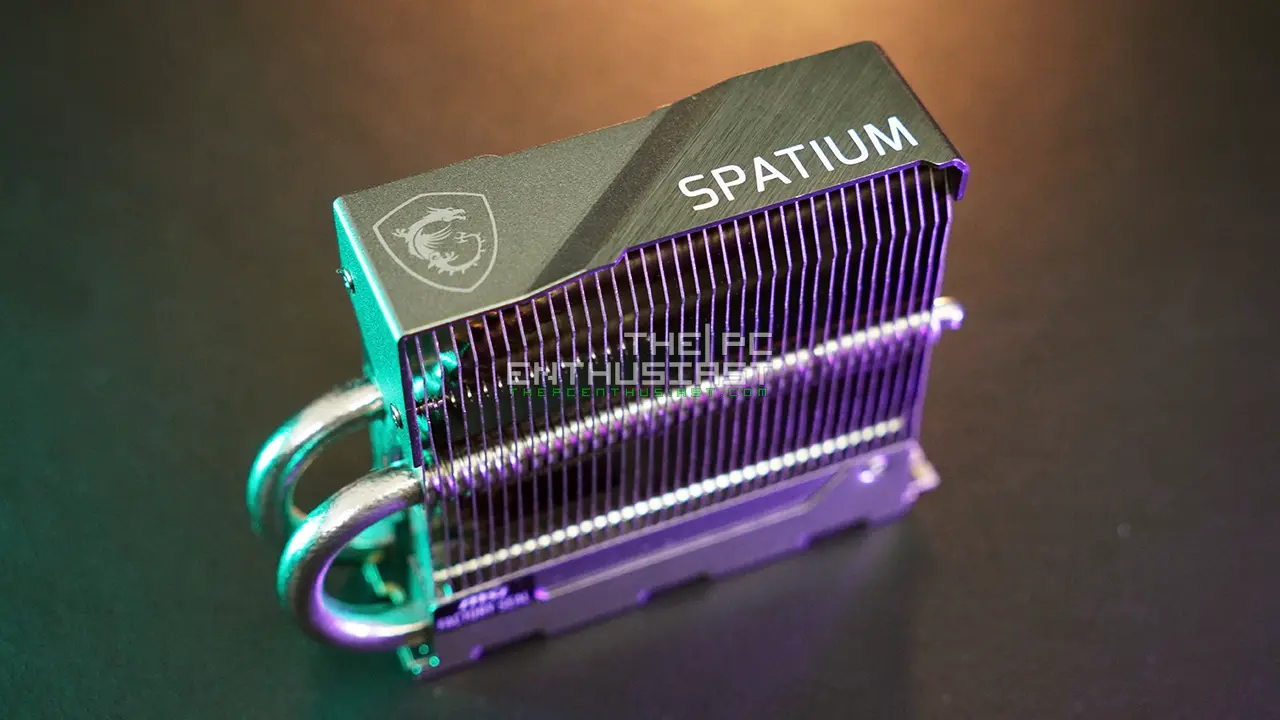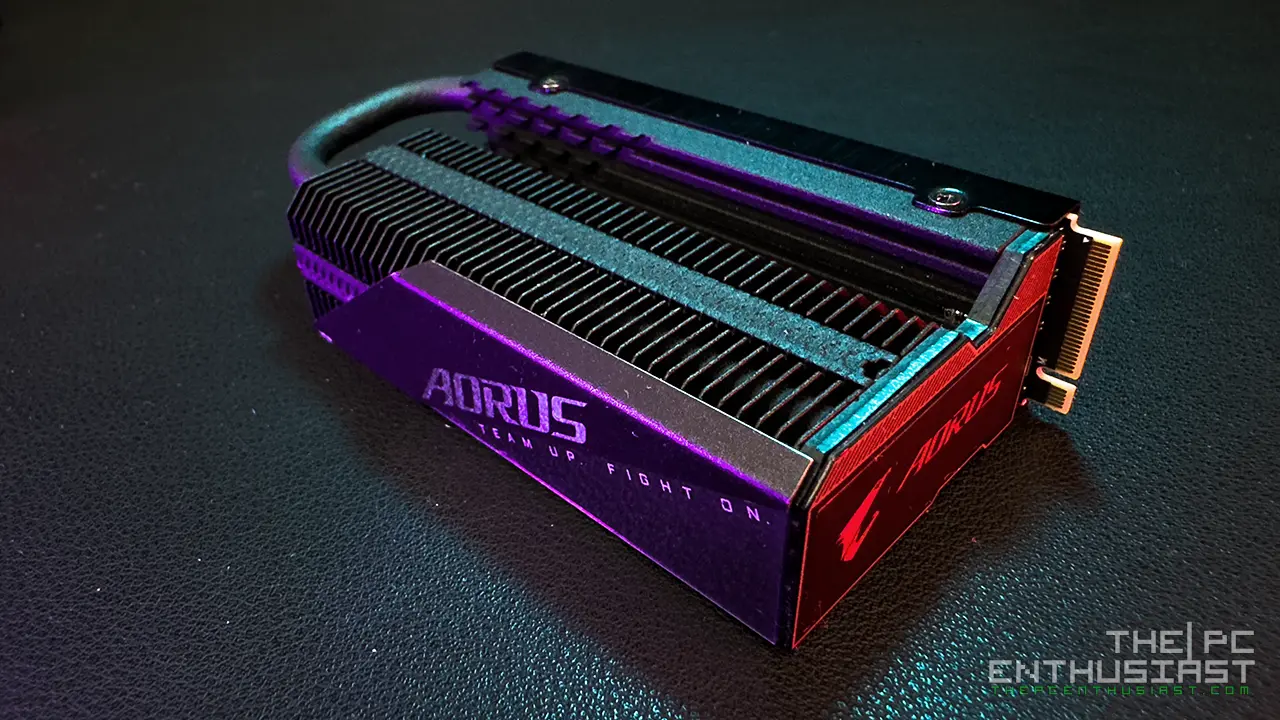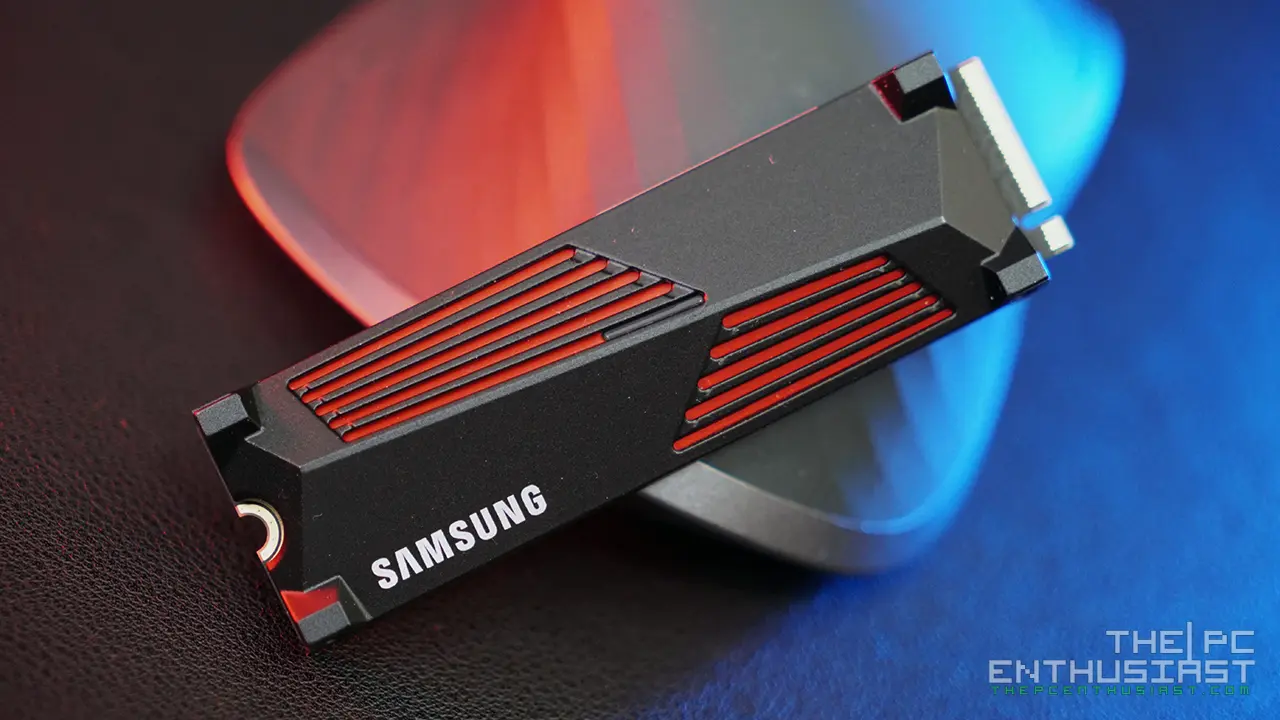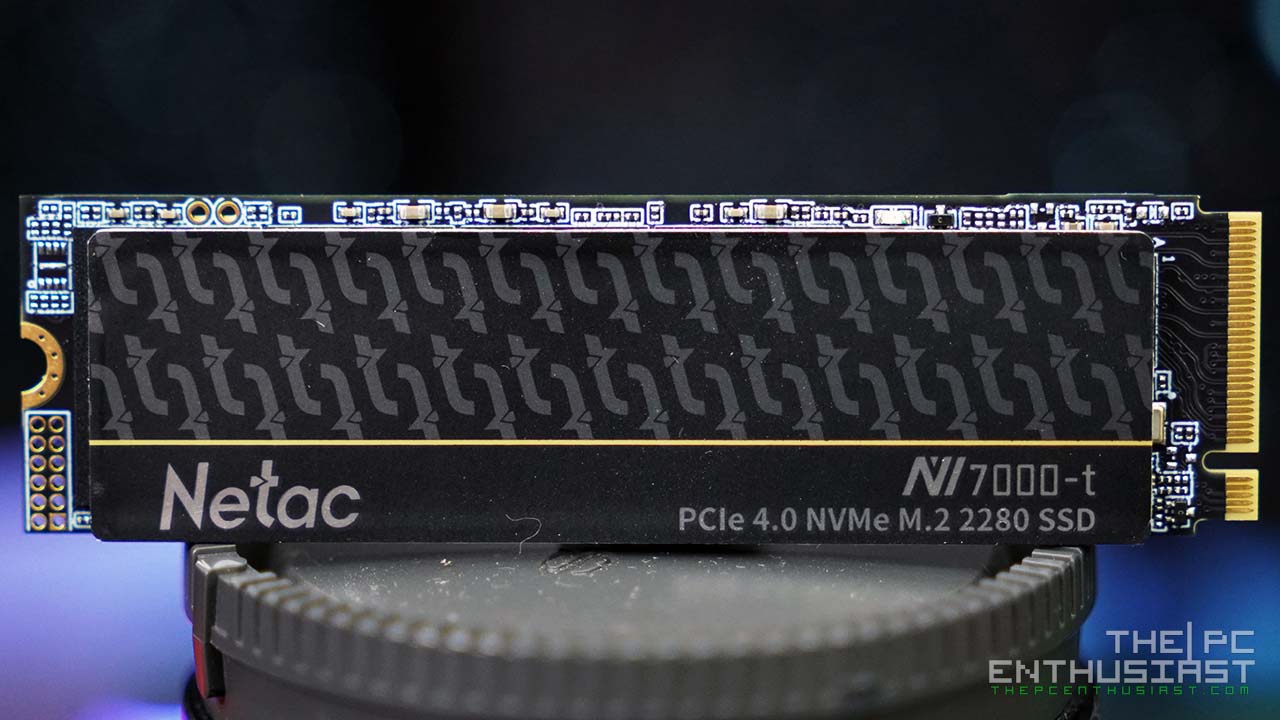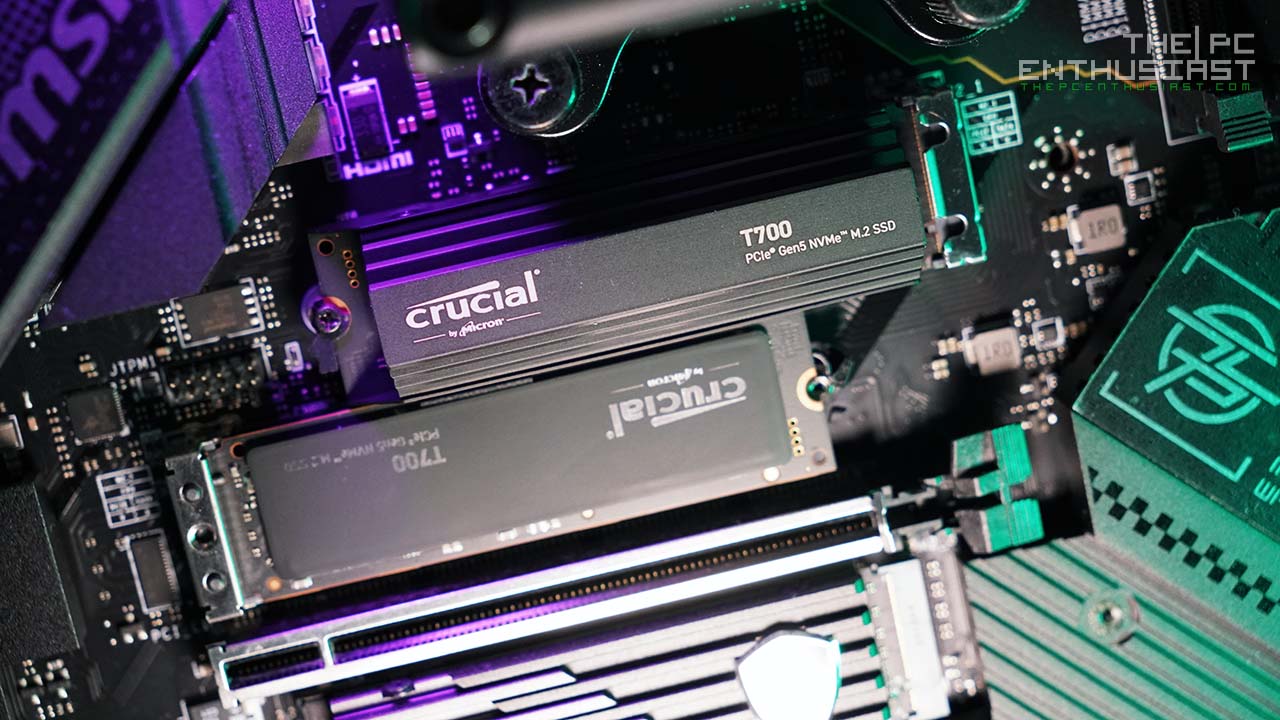Today we take a look at the Crucial P5 M.2 NVMe SSD, the company’s first high-performance PCIe Gen3 NVMe SSD. Previously, we reviewed the Crucial P1, which is their entry-level NVMe SSD. It’s about time they release something on the higher end. Actually, they are already a bit late already at the party. Samsung has its 970 SSD Series, WD has the SN750 series, Kingston recently updated their high-performance drive to K2500. The only thing left for Crucial is to release a Gen4 SSD. Anyway, for now, let’s check out how the Crucial P5 SSD performs.
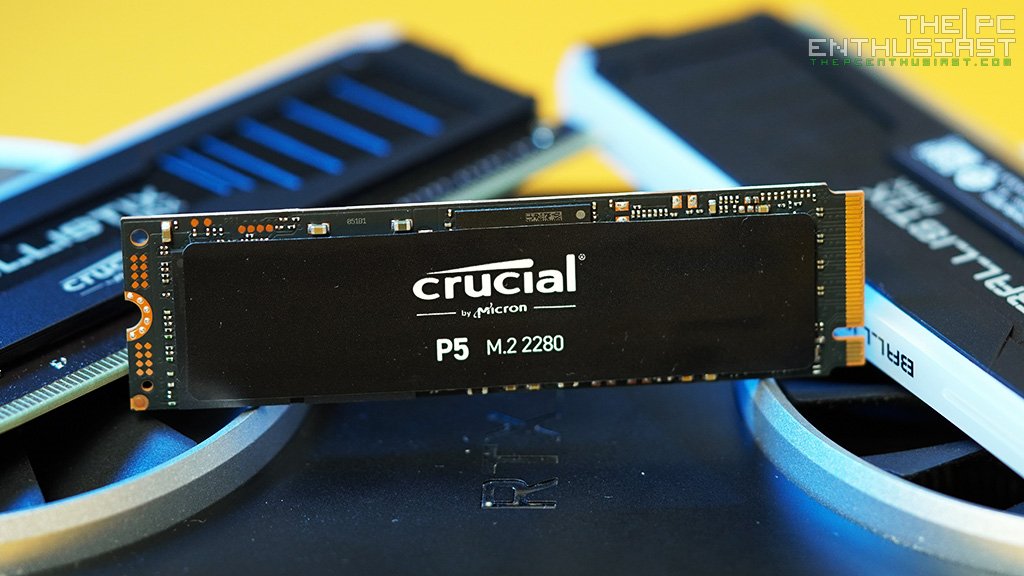
Crucial P5 M.2 NVMe SSD Review – 2TB Capacity
Crucial’s latest M.2 drive, the P5 SSD offers sequential read speeds of up to 3,400MB/s and sequential write speeds of up to 3,000MB/s. Everything on this drive is from Micron, from the controller to the NAND flash; it’s all Micron. It’s available in 250GB, 500GB, 1TB and 2TB capacities. Although, I would avoid that 250GB capacity since it has a much slower sequential write speed of only up to 1,400MB/s.
The Crucial P5 SSD features dynamic write acceleration, error correction, and adaptive thermal protection to optimize performance and durability. It also features full-drive encryption, Redundant Array of Independent NAND (RAIN), Multistep Data Integrity Algorithms, and integrated power loss immunity. Let’s not forget the usual suspects like TRIM support, SMART, ECC, and APST (autonomous power state transition).
When it comes to endurance, the Crucial P5 NVMe SSD has a life expectancy of 1.8 million hours. The endurance or total bytes written depends on the capacity. For the 250GB it has a TBW of 150; 300 TBW for the 500GB, 600 TBW for the 1TB and 1200 TBW for the 2TB capacity. Finally, Crucial offers a limited 5-year warranty for the P5 series.
Crucial P5 SSD Specifications
| Interface | PCIe Express 3.0 x4, NVMe 1.3 |
| Form Factor | M.2 Type-2280 |
| Capacities | 250GB, 500GB, 1TB, 2TB |
| NAND Type | Micron 96 Layer 3D TLC |
| Controller | Micron DM01B2 |
| Sequential Read Speed | up to 3,4000 MB/s |
| Sequential Write Speed | up to 3,000 MB/s; 1,400MB/s (for 250GB capacity) |
| Terabyte Written / Day | 150TBW – 250GB 300TBW – 500GB 600TBW – 1TB 1200TBW – 2TB |
| Operating Temperature | 0 °C to 70 °C |
| Warranty | 5 years limited |
Packaging and Closer Look
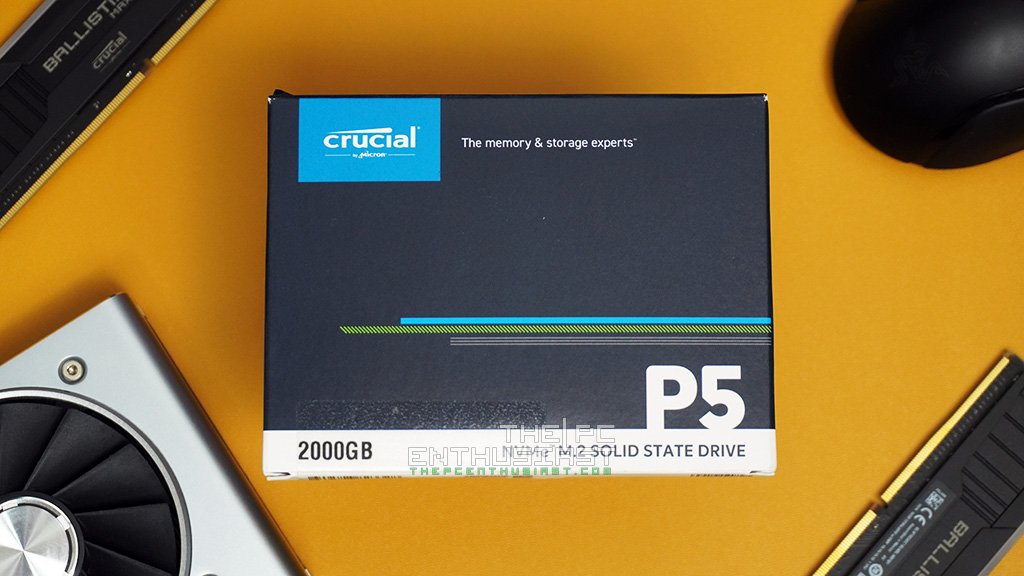
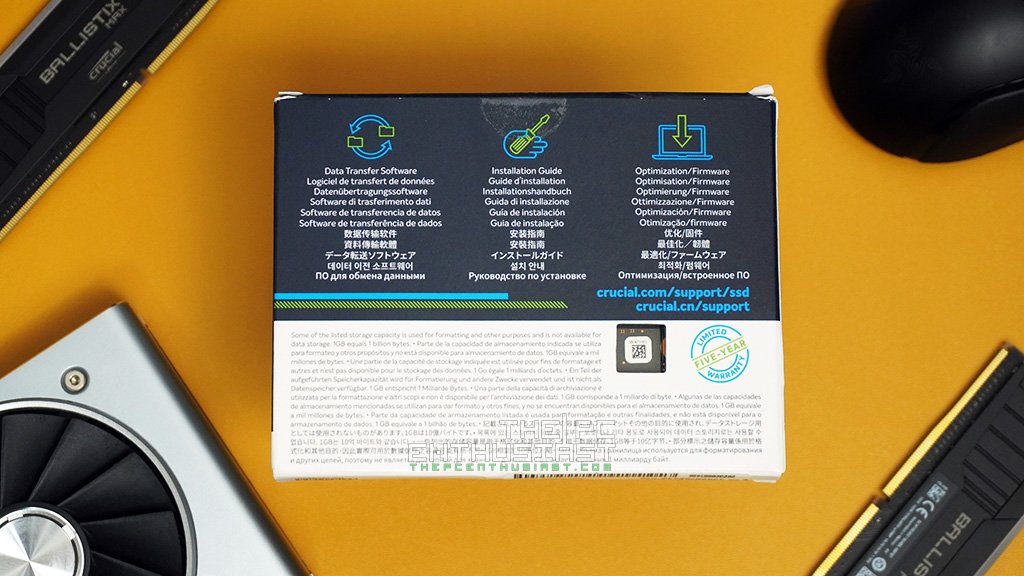
Crucial uses a familiar box art and color theme. It’s a simple box, with the name and capacity of the product at the front portion. Some of the features are printed at the back. There’s a small square cut out to see the QR code of the drive itself.

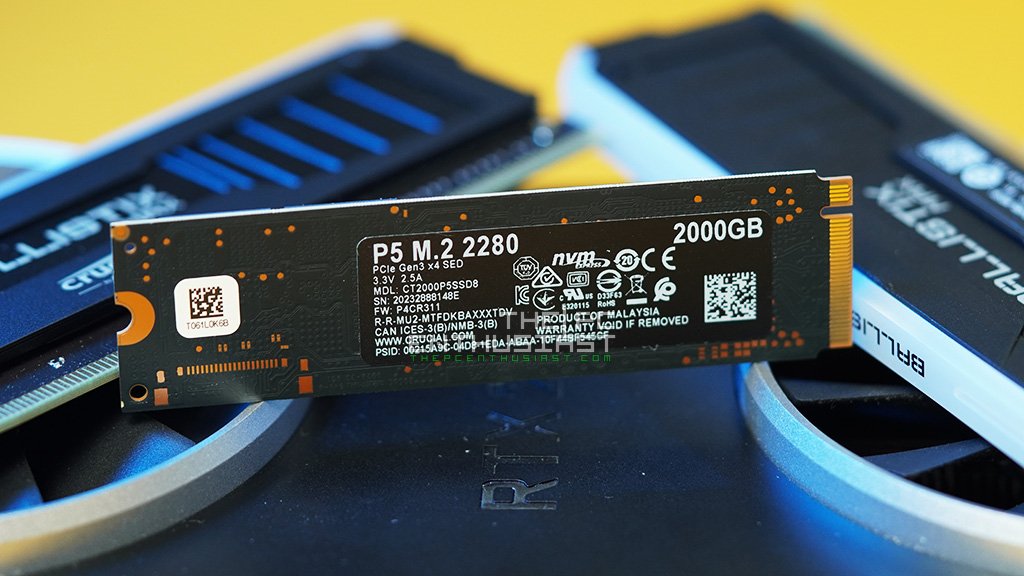
The Crucial P5 features an M.2 2280 form factor. It’s pretty much standard and the most commonly used form factor on M.2 SSDs these days. I like the minimalistic look of the P5. It features a black PCB with black stickers for the label. Even though this is a 2TB capacity, it only occupies only one side of the PCB. Meaning, there are no chips or components on the other side.
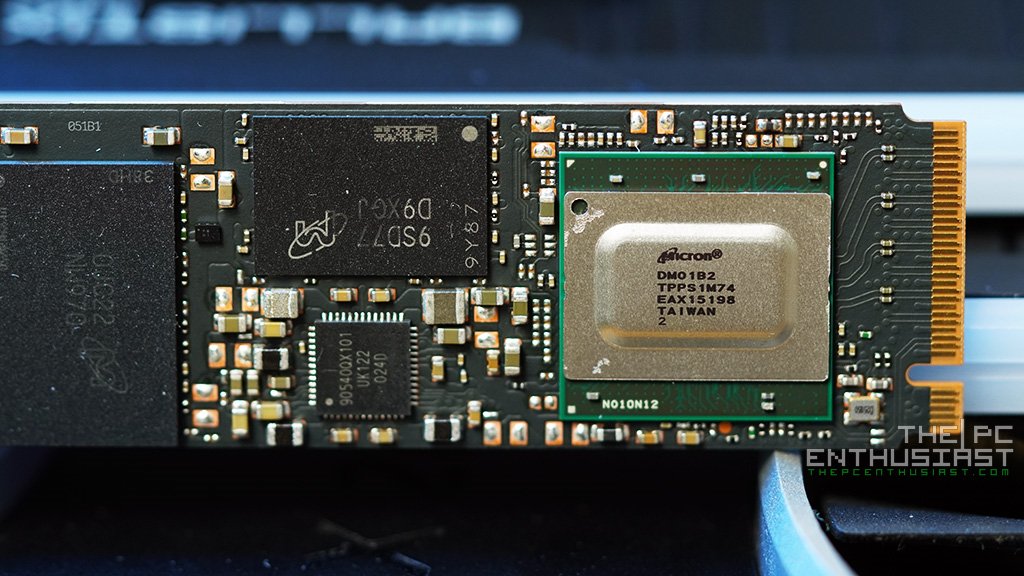
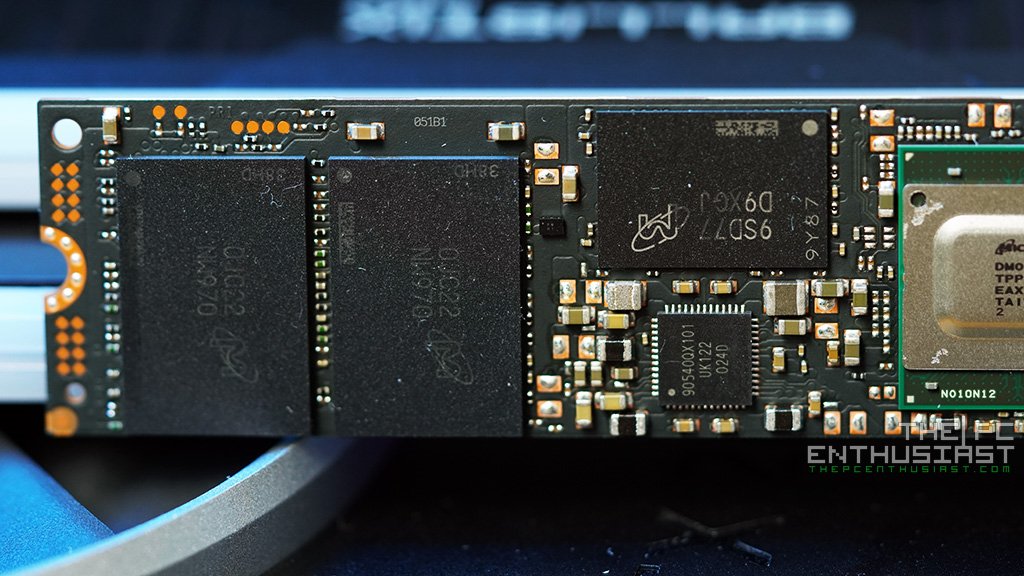
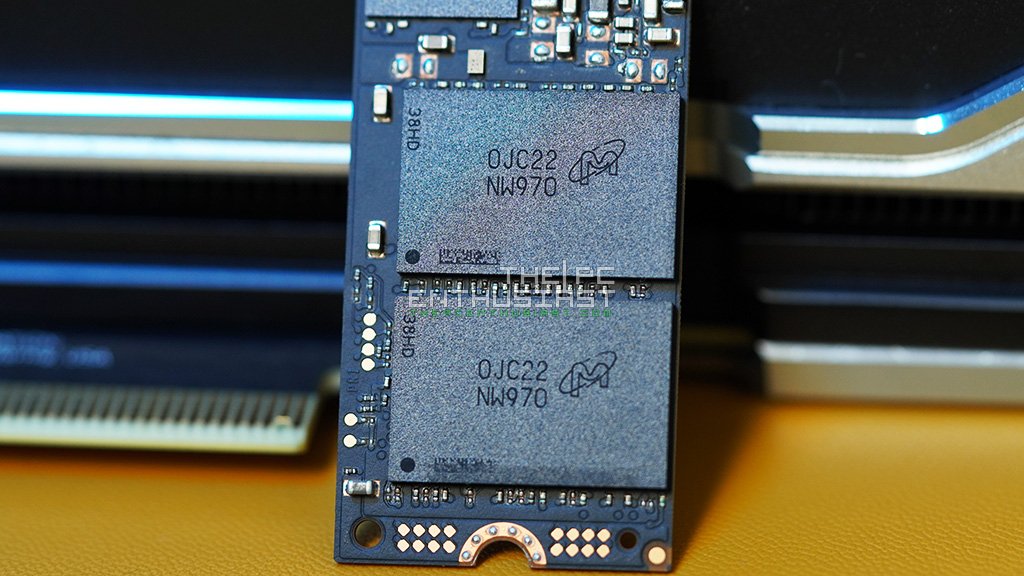
Starting from the left-hand side, you can see the Micron DM01B2 controller that has a metal shielding on top of the chip. Right next to the controller is a Micron D9XGJ LPDDR4 memory with a part number MT53D512M32D2DS-046. Finally, you can see the two Micron NW970 3D TLC NAND flash with part number MT29F8T08ESLCEG4-R:C. Each chip is 1TB in capacity for a total of 2TB.
Now let’s check out how this drive performs.
Test Setup
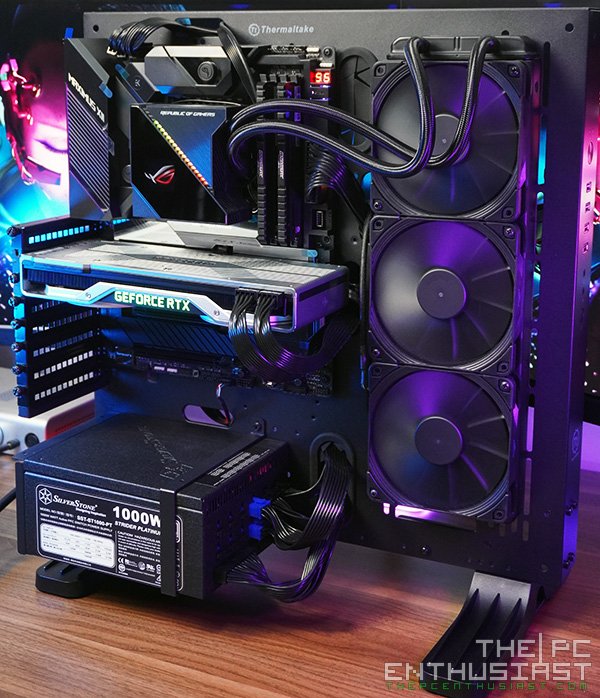
The Crucial P5 NVMe SSD 2TB capacity was tested on the Asus Maximus XII Formula Z490 motherboard, powered with an Intel Core i7-10700K CPU. Below are the rest of the specifications of the system:
| Operating System | Windows 10 Pro 64bit version 2004 |
| Processor | Intel Core i7-10700K |
| Motherboard | Asus ROG Maximus XII Formula |
| Memory | Crucial Ballistix Elite 16GB DDR4-4000 CL18 |
| Graphics Card | NVIDIA GeForce RTX 2080 Ti Founders Edition |
| OS Drive | Crucial P1 1TB NVMe SSD |
| Power Supply | Silverstone ST1000-PT |
| Chassis | Thermaltake Core P3 |
Crucial P5 NVMe SSD 2TB Benchmark Results
Crucial P5 SSD 2TB Copy Test
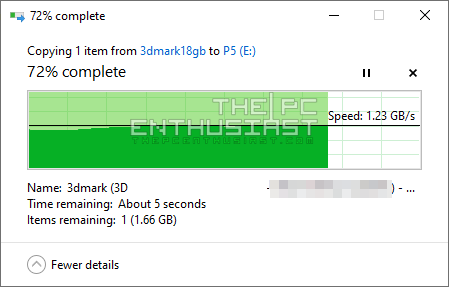
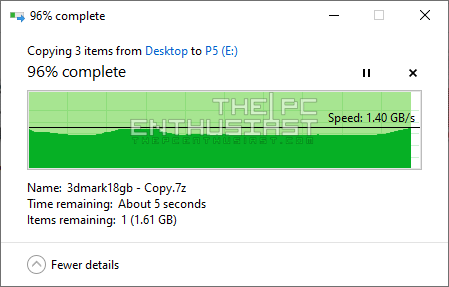
Above you can see two screenshots. On the first one, on the left-hand side, I copied a 6GB file from the Crucial P1 NVMe SSD to the Crucial P5. The 6GB file is the installer of the 3DMark benchmark tool compressed in zip format. The copy speed was constantly hovering around 1.23GB/s and the copy process was finished in just a few seconds.
In the second screenshot, right-hand side, I placed several copies of the installer and compressed them in 7z format. Ignore the “18gb” on the file name, as the resulting file size is around 53.7GB. This is also the same copy test I conducted in my Samsung 870 QVO review.
However, unlike the 870 QVO SSD, where the speed greatly suffers after it has maxed out its cache, the Crucial P5 copies at a more or less constant speed. We can see that even a 53.7GB file size, it was able to copy the whole file with an above 1 GB/s transfer speed.
Let’s check some synthetic benchmark results next.
AJA Benchmark Results
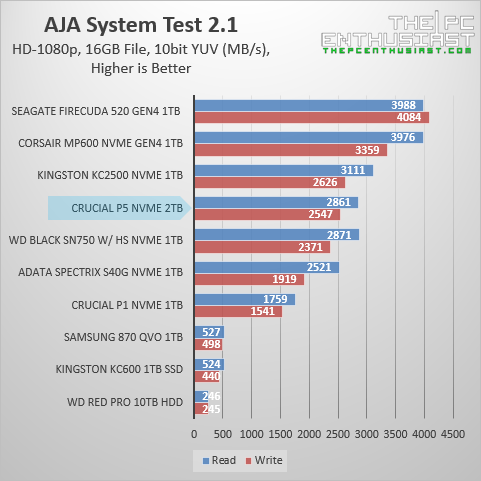
In the AJA system test, we can we that the Crucial P5 just sits in between the Kingston KC2500 and WD Black SN 750. It’s performing quite similar to the other high-performance NVMe Gen3 SSDs.
Anvil’s Storage Utilities Benchmark Results
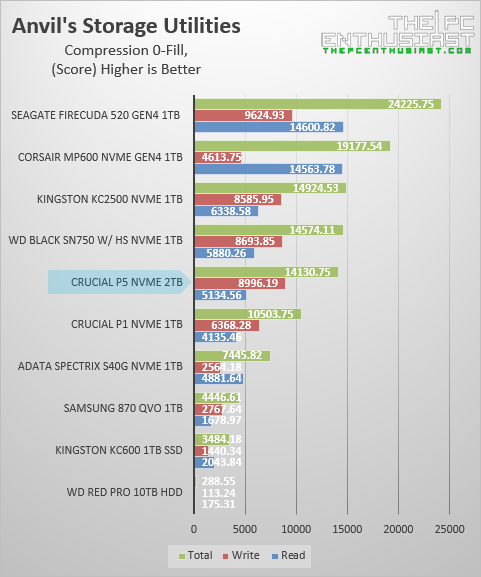
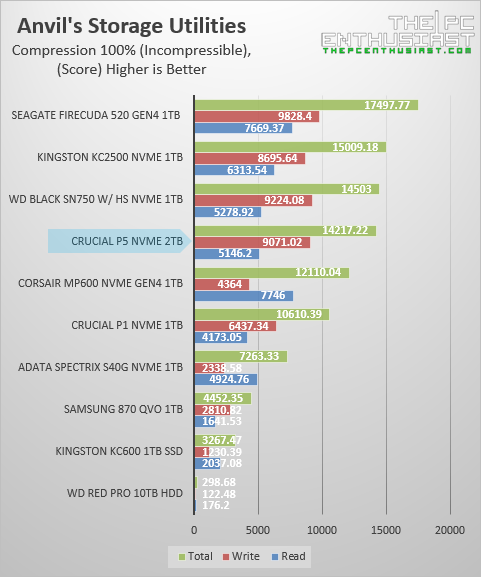
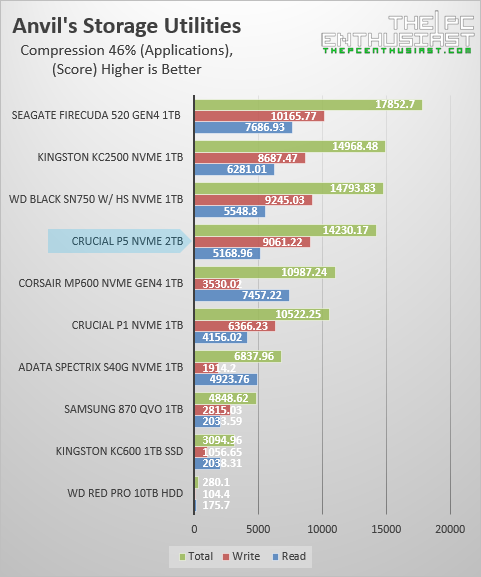
Again we see a similar pattern or “grouping” of performance with Anvil’s storage utilities. Although, this time, the Crucial P5 is a tad slower than the WD Black SN750 and Kingston KC2500. Also, notice that there is a more or less noticeable jump from the Crucial P1 to the Crucial P5. The P1 is an entry-level NVMe SSD, but it is still faster than the fastest SATA SSD.
AS SSD Benchmark Results
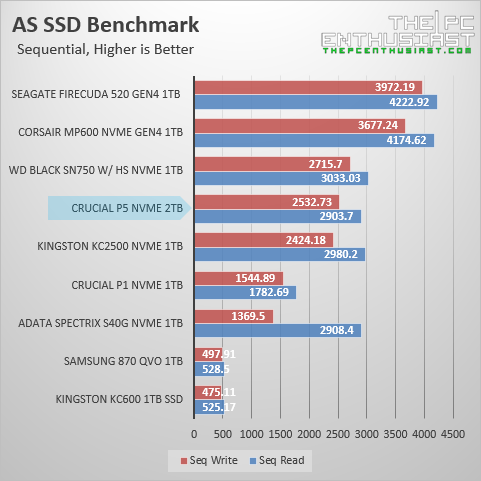
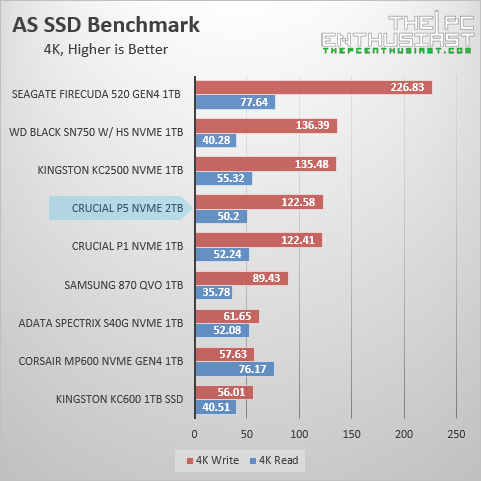
In AS SSD benchmark, we can see that the SN750, KC2500 and P5 are just trading blows. The three drives are on the same level of performance, but the P5 is trailing behind when it comes to 4K random speed in this test.
ATTO Disk Benchmark Results
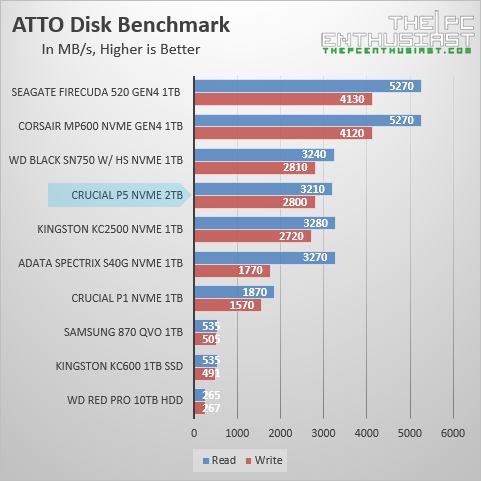
Up next is ATTO disk benchmark results. This is the benchmark tool that storage manufacturers usually use to showcase the performance of their drive. The Crucial P5 didn’t reach its advertised speed in this test, but it is close enough. I usually don’t expect that a drive would reach or surpass its advertised speed. But I do expect that, at least, performance would be (very) close to the advertised speed.
CrystalDiskMark Benchmark Results
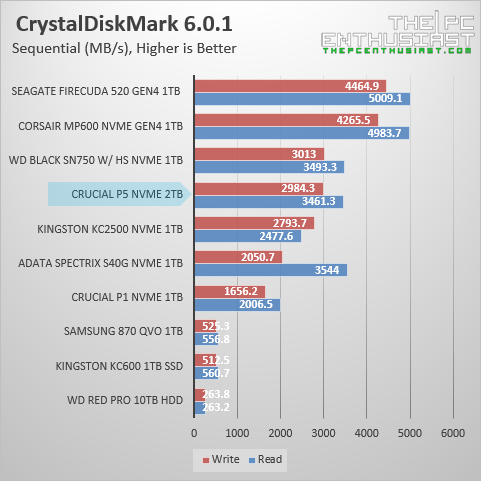
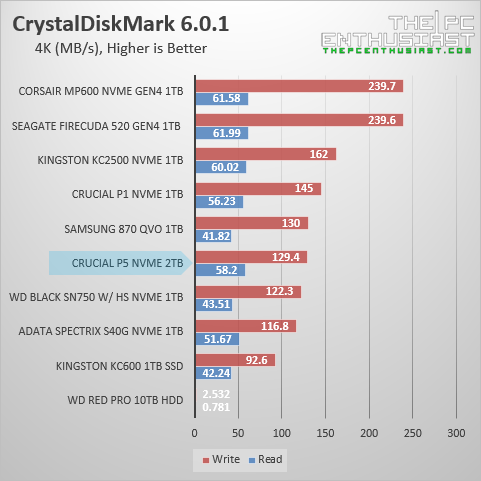
Again, in CrystalDiskMark benchmark, I see a similar pattern where the Crucial P5 is in the same ballpark as the SN750 and KC2500, but trails behind when it comes to 4K random test.
ezIOmeter Benchmark Results
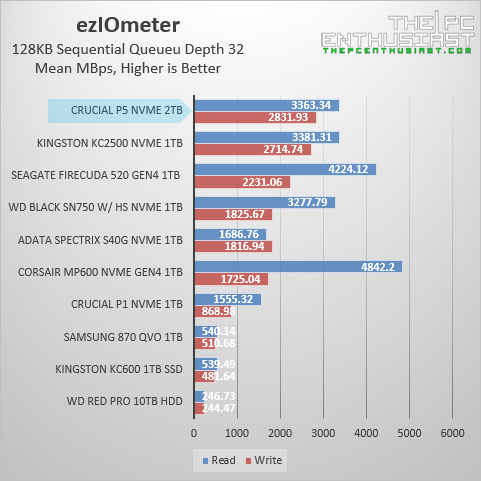
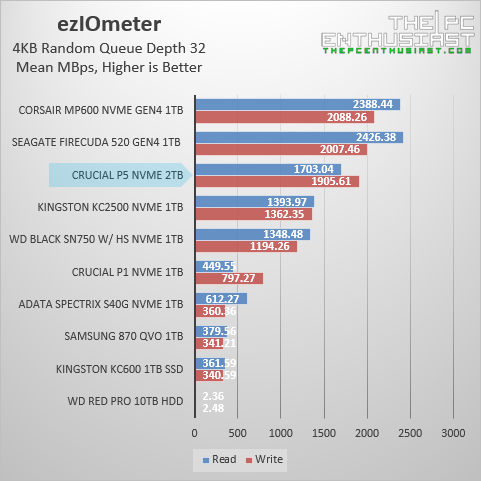
Surprisingly, the Crucial P5 redeemed itself in the ezIOmeter tests; both in 128KB sequential and 4KB random. This is a very old and dated benchmark utility though. Finally, let’s test the Crucial P5 with some of the more updated storage benchmark utilities available.
PCMark 8 Storage Benchmark Results
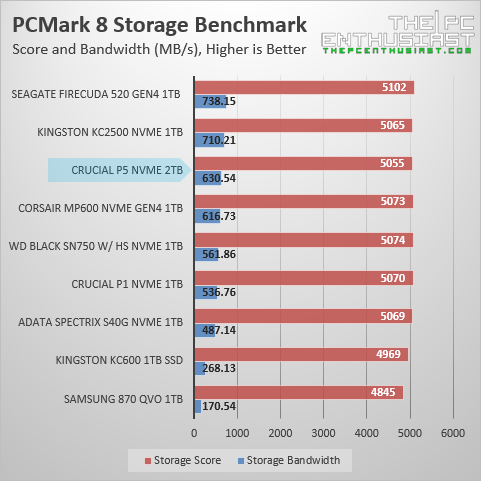
Unlike the previous benchmark tools, the PCMark 8 Storage test is more intensive and uses a real-world scenario to test the drive. It basically tests the performance of SSDs, HDDs and hybrid drives with traces recorded from Adobe Creative Suite, Microsoft Office and a selection of popular games. It also highlights real-world performance differences between storage devices, unlike synthetic storage tests.
Here we can see that the Crucial P5 is performing quite well, with an overall storage score close to that of a Gen4 NVMe SSD. It also got a storage bandwidth higher than the WD Black SN750 and surprisingly a bit higher than the MP600 as well.
PCMark 10 Full System Drive Benchmark Results
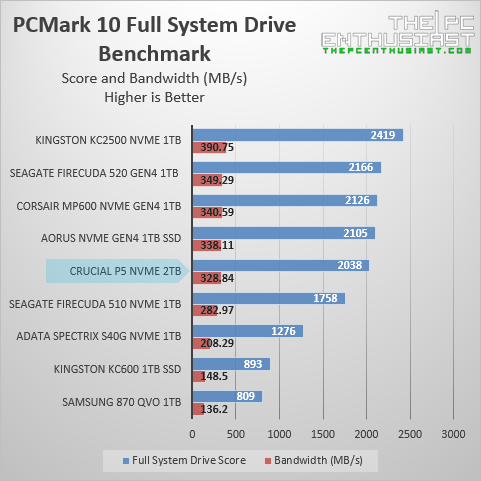
Finally, I tested the Crucial P5 NVMe 2TB SSD using the PCMark 10 full system drive benchmark. This test uses a wide-ranging set of real-world traces from popular applications and common tasks to fully test the performance of the fastest modern drives. This will give us a more realistic expectation of a drive’s performance and a closer to a real-world testing scenario.
As you can see from the results above, the Crucial P5 sits just below the Gen4 NVMe SSDs that are technically faster than the P5. Now you might be wondering why the Kingston KC2500, a Gen3 SSD, is on top of the chart. That, I don’t have an answer as well. I tested and benchmarked the drive several times and the results were very consistent. I even benchmark it on another motherboard and the results were the same. Technically speaking, it shouldn’t be faster than any Gen4 SSDs, so it’s a big question mark for me as well.
Anyway, time to wrap up this review.
Crucial P5 Pricing and Availability
The Crucial P5 M.2 NVMe SSD series is now available. It comes with a manufacturer’s suggested retail price of $54.99 for the 250GB; $79.99 for the 500GB; $149.99 for the 1TB; and $339.99 for the 2TB capacity. Crucial also offers a limited 5-year warranty for the P5 SSD series and they also bundled it with an Acronis True Image cloning software. For the latest pricing and availability kindly check them out via the links below.
Crucial P5 SSD latest pricing and availability:
For US: available on Amazon.com here
Global/US: available on Newegg.com here
Crucial P5 M.2 SSD Review Conclusion
The Crucial P5 is the company’s newest and fastest NMVe SSD available. It’s been a long-awaited product and finally Crucial was able to release it. The P5 is basically an all-Micron product, from the controller down to the NAND flash, they are all built using Micron chips.
Unlike the Crucial P1 or the newer P2, the P5 is a high-performance drive designed for those who are seeking for a fast M.2 NVMe Gen3 SSD. Though loading times would be significantly faster, it may be a bit of an overkill for gaming purposes alone. It’s best suited for content creation, video editing, and other application that access large file sizes and requires a fast read/write speeds.
Generally speaking, I find the Crucial P5’s performance to be good and as expected from a high-performance Gen3 SSD. It’s in the same level of performance as the other faster Gen3 NVMe drives. However, it does trail behind when it comes to 4K random performance. Although, I don’t find it to be a deal-breaker, not unless you require an SSD with a really fast and consistent 4K random performance.
The quality of the drive, the performance, and its aesthetics all checks out for me. The only real question is if the P5’s current market price is competitive enough or not. If this drive is currently more expensive than the other Gen3 SSD of its class, then that would be a deal-breaker for me.
As of today, it’s a bit cheaper than the Samsung 970 EVO Plus, Kingston KC2500 and the P5 2TB capacity is cheaper than the WD Black SN750 2TB. The prices I saw are correct at the time this review was published. SSD prices tend to change more often compared to other PC components.
So overall, considering all things including the price, I think the Crucial P5 SSD series is a really good product that you can safely consider when you shop for an SSD. The only thing that I would avoid here is the 250GB capacity as its write speed is, honestly, less than stellar.


